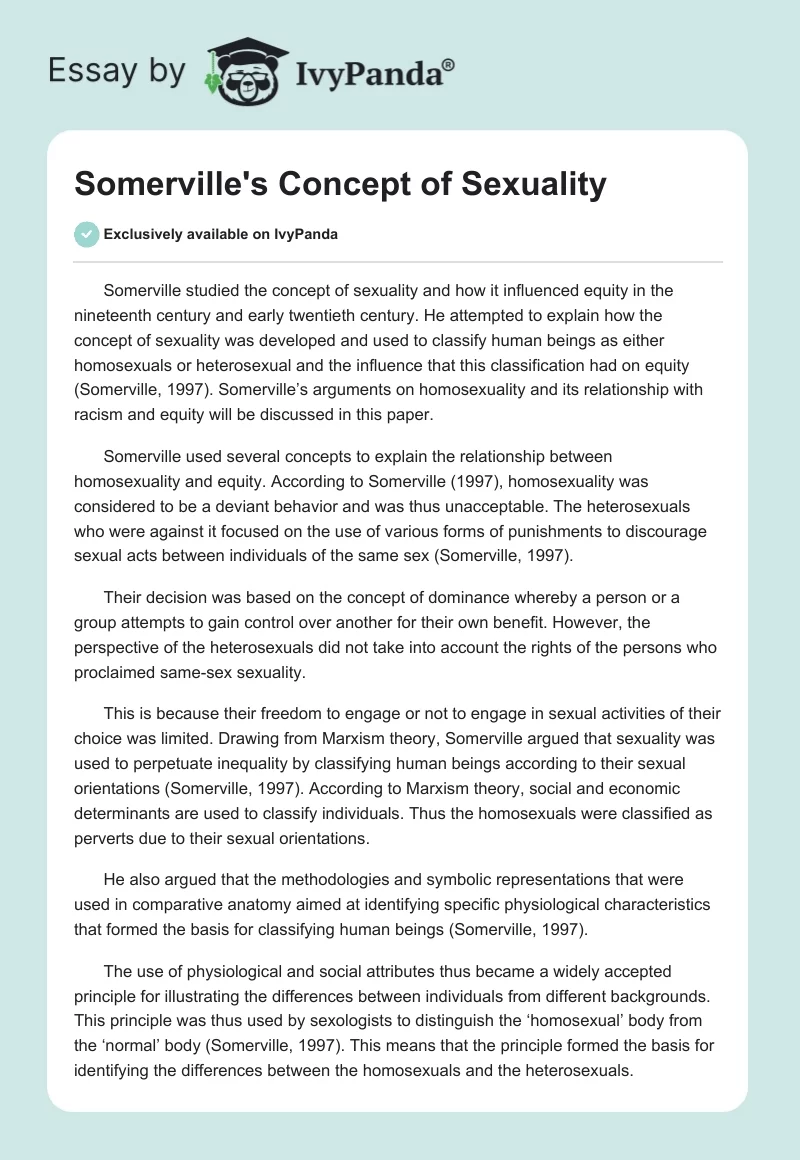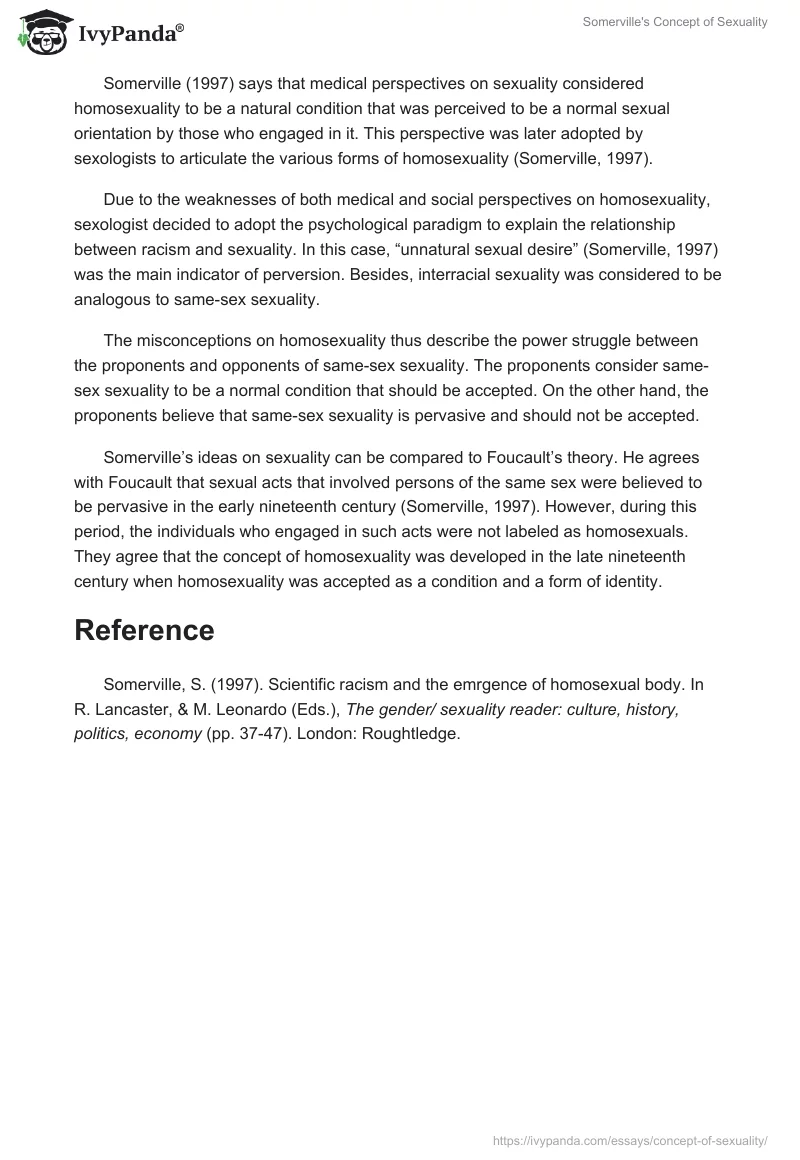Somerville studied the concept of sexuality and how it influenced equity in the nineteenth century and early twentieth century. He attempted to explain how the concept of sexuality was developed and used to classify human beings as either homosexuals or heterosexual and the influence that this classification had on equity (Somerville, 1997). Somerville’s arguments on homosexuality and its relationship with racism and equity will be discussed in this paper.
Somerville used several concepts to explain the relationship between homosexuality and equity. According to Somerville (1997), homosexuality was considered to be a deviant behavior and was thus unacceptable. The heterosexuals who were against it focused on the use of various forms of punishments to discourage sexual acts between individuals of the same sex (Somerville, 1997).
Their decision was based on the concept of dominance whereby a person or a group attempts to gain control over another for their own benefit. However, the perspective of the heterosexuals did not take into account the rights of the persons who proclaimed same-sex sexuality.
This is because their freedom to engage or not to engage in sexual activities of their choice was limited. Drawing from Marxism theory, Somerville argued that sexuality was used to perpetuate inequality by classifying human beings according to their sexual orientations (Somerville, 1997). According to Marxism theory, social and economic determinants are used to classify individuals. Thus the homosexuals were classified as perverts due to their sexual orientations.
He also argued that the methodologies and symbolic representations that were used in comparative anatomy aimed at identifying specific physiological characteristics that formed the basis for classifying human beings (Somerville, 1997).
The use of physiological and social attributes thus became a widely accepted principle for illustrating the differences between individuals from different backgrounds. This principle was thus used by sexologists to distinguish the ‘homosexual’ body from the ‘normal’ body (Somerville, 1997). This means that the principle formed the basis for identifying the differences between the homosexuals and the heterosexuals.
Somerville (1997) says that medical perspectives on sexuality considered homosexuality to be a natural condition that was perceived to be a normal sexual orientation by those who engaged in it. This perspective was later adopted by sexologists to articulate the various forms of homosexuality (Somerville, 1997).
Due to the weaknesses of both medical and social perspectives on homosexuality, sexologist decided to adopt the psychological paradigm to explain the relationship between racism and sexuality. In this case, “unnatural sexual desire” (Somerville, 1997) was the main indicator of perversion. Besides, interracial sexuality was considered to be analogous to same-sex sexuality.
The misconceptions on homosexuality thus describe the power struggle between the proponents and opponents of same-sex sexuality. The proponents consider same-sex sexuality to be a normal condition that should be accepted. On the other hand, the proponents believe that same-sex sexuality is pervasive and should not be accepted.
Somerville’s ideas on sexuality can be compared to Foucault’s theory. He agrees with Foucault that sexual acts that involved persons of the same sex were believed to be pervasive in the early nineteenth century (Somerville, 1997). However, during this period, the individuals who engaged in such acts were not labeled as homosexuals. They agree that the concept of homosexuality was developed in the late nineteenth century when homosexuality was accepted as a condition and a form of identity.
Reference
Somerville, S. (1997). Scientific racism and the emrgence of homosexual body. In R. Lancaster, & M. Leonardo (Eds.), The gender/ sexuality reader: culture, history, politics, economy (pp. 37-47). London: Roughtledge.


